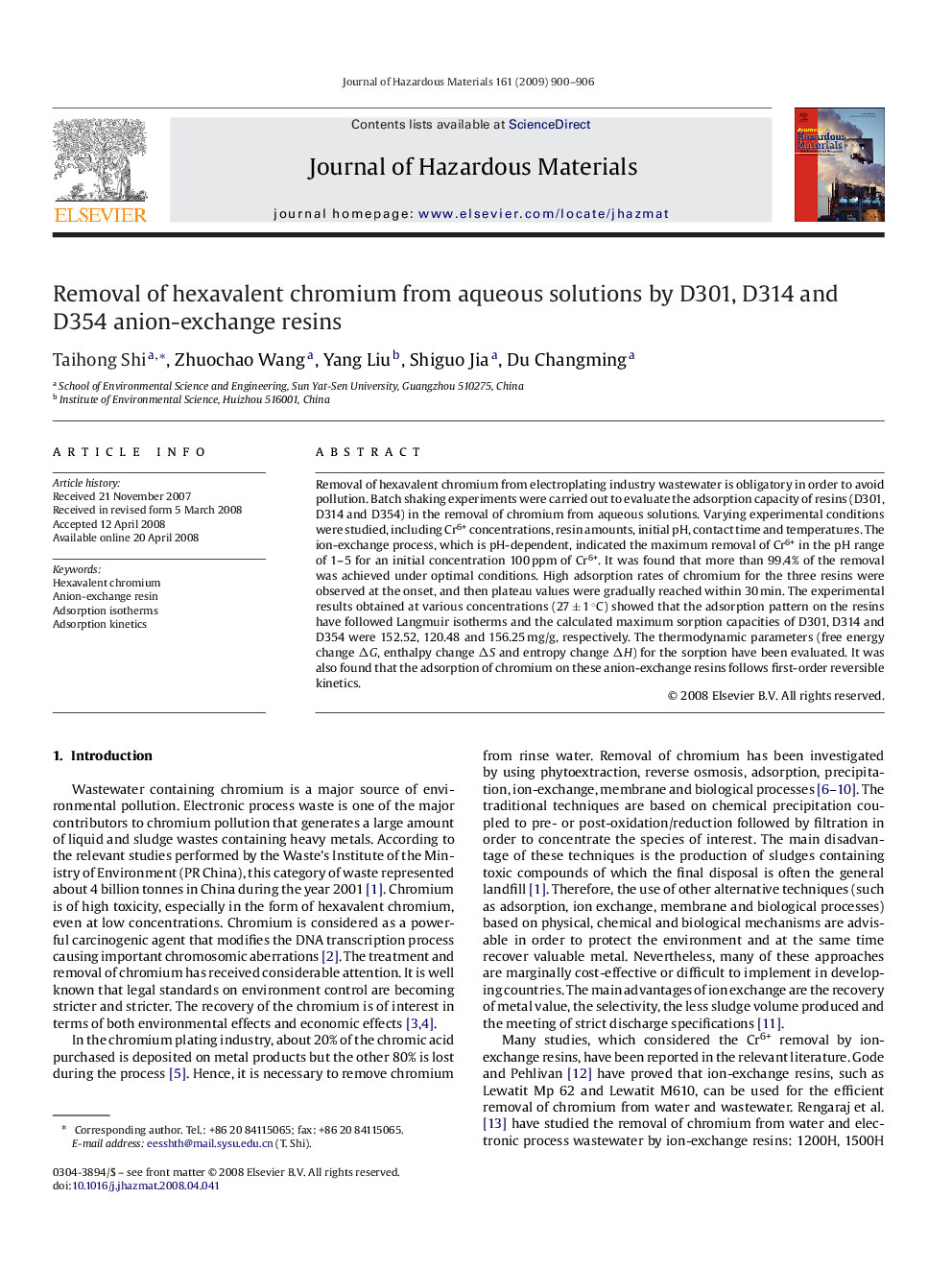| Article ID | Journal | Published Year | Pages | File Type |
|---|---|---|---|---|
| 582651 | Journal of Hazardous Materials | 2009 | 7 Pages |
Abstract
Removal of hexavalent chromium from electroplating industry wastewater is obligatory in order to avoid pollution. Batch shaking experiments were carried out to evaluate the adsorption capacity of resins (D301, D314 and D354) in the removal of chromium from aqueous solutions. Varying experimental conditions were studied, including Cr6+ concentrations, resin amounts, initial pH, contact time and temperatures. The ion-exchange process, which is pH-dependent, indicated the maximum removal of Cr6+ in the pH range of 1-5 for an initial concentration 100 ppm of Cr6+. It was found that more than 99.4% of the removal was achieved under optimal conditions. High adsorption rates of chromium for the three resins were observed at the onset, and then plateau values were gradually reached within 30 min. The experimental results obtained at various concentrations (27 ± 1 °C) showed that the adsorption pattern on the resins have followed Langmuir isotherms and the calculated maximum sorption capacities of D301, D314 and D354 were 152.52, 120.48 and 156.25 mg/g, respectively. The thermodynamic parameters (free energy change ÎG, enthalpy change ÎS and entropy change ÎH) for the sorption have been evaluated. It was also found that the adsorption of chromium on these anion-exchange resins follows first-order reversible kinetics.
Related Topics
Physical Sciences and Engineering
Chemical Engineering
Chemical Health and Safety
Authors
Taihong Shi, Zhuochao Wang, Yang Liu, Shiguo Jia, Du Changming,
